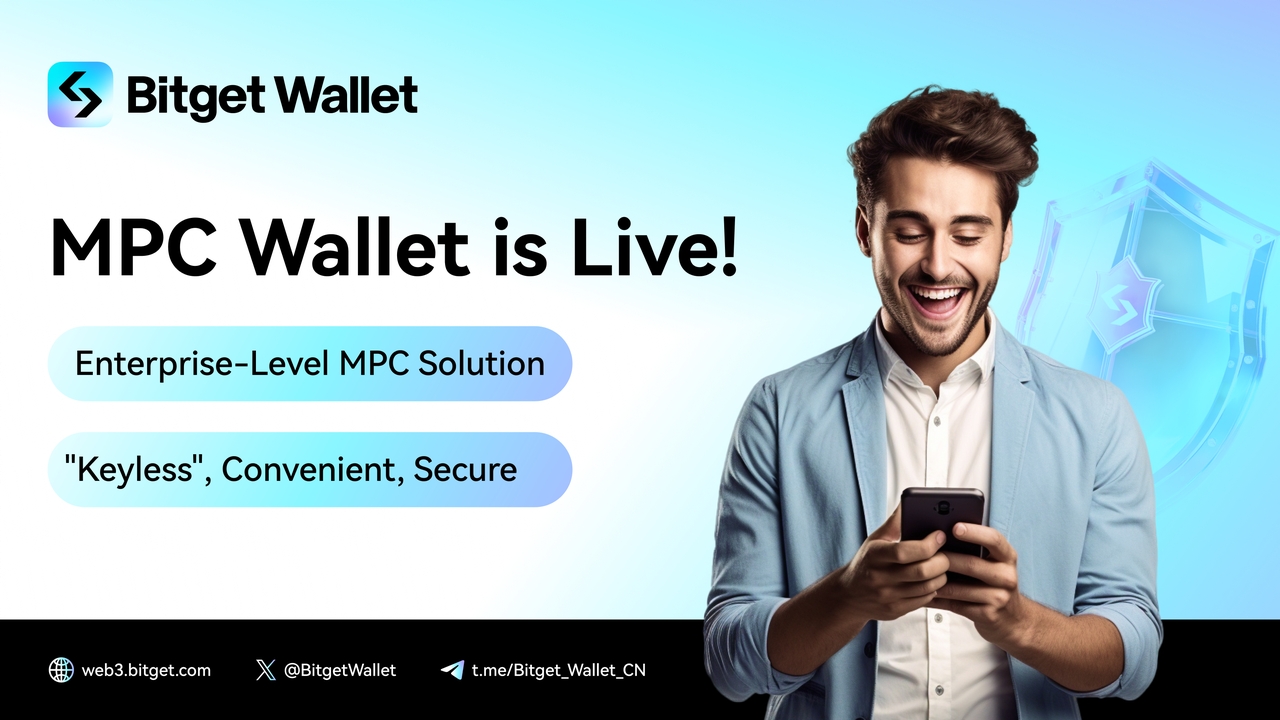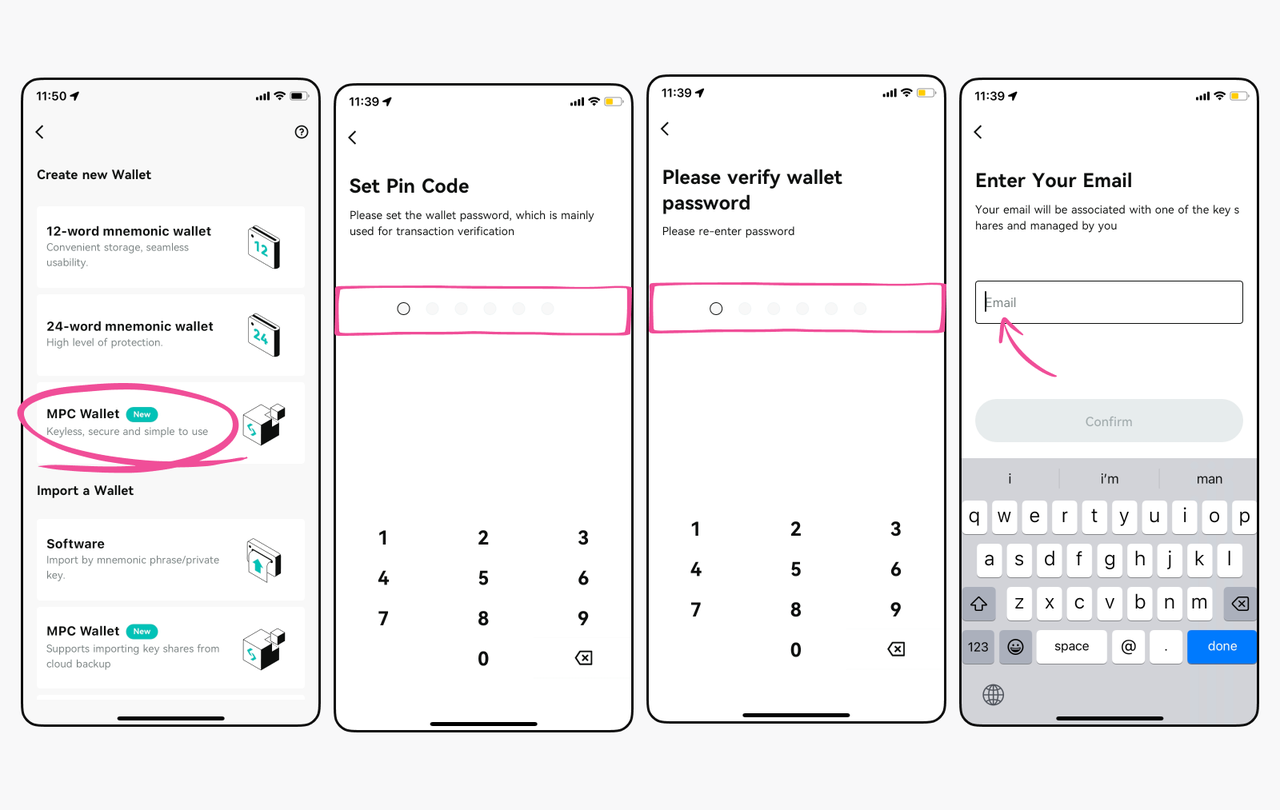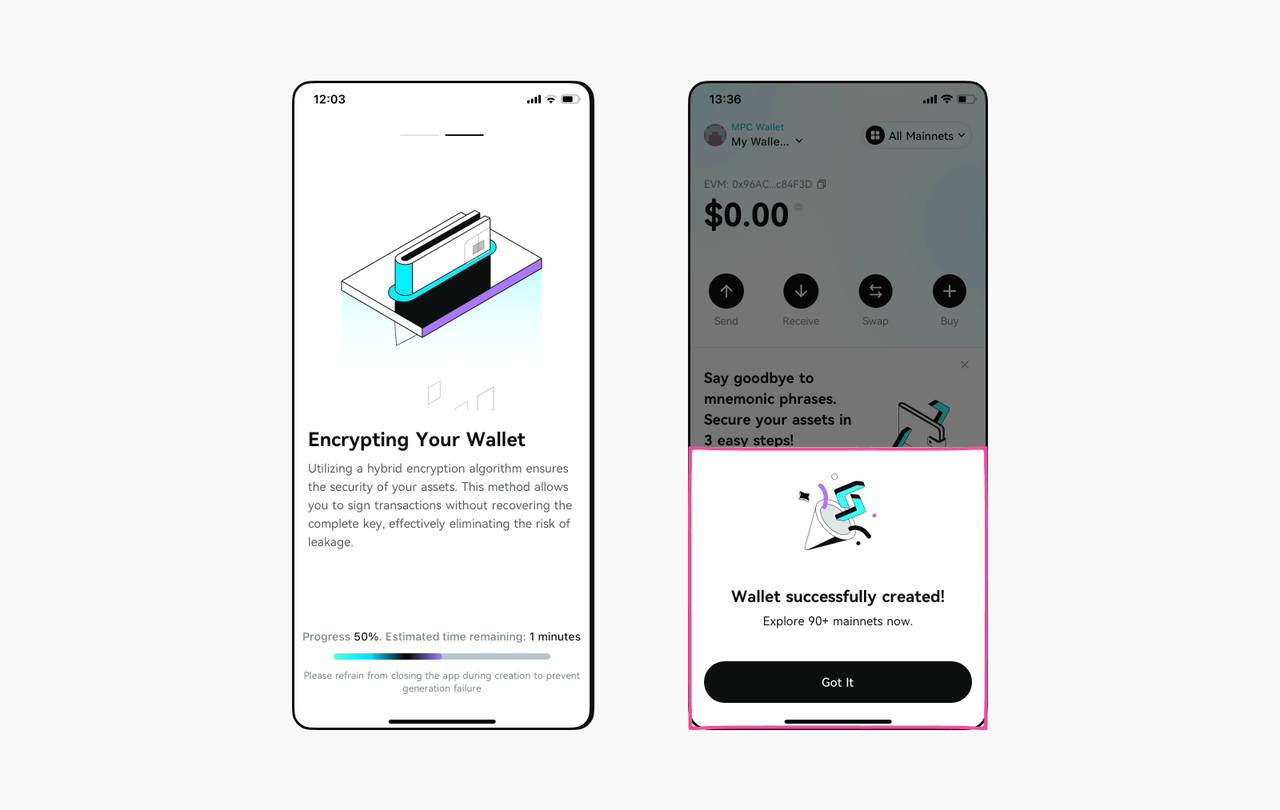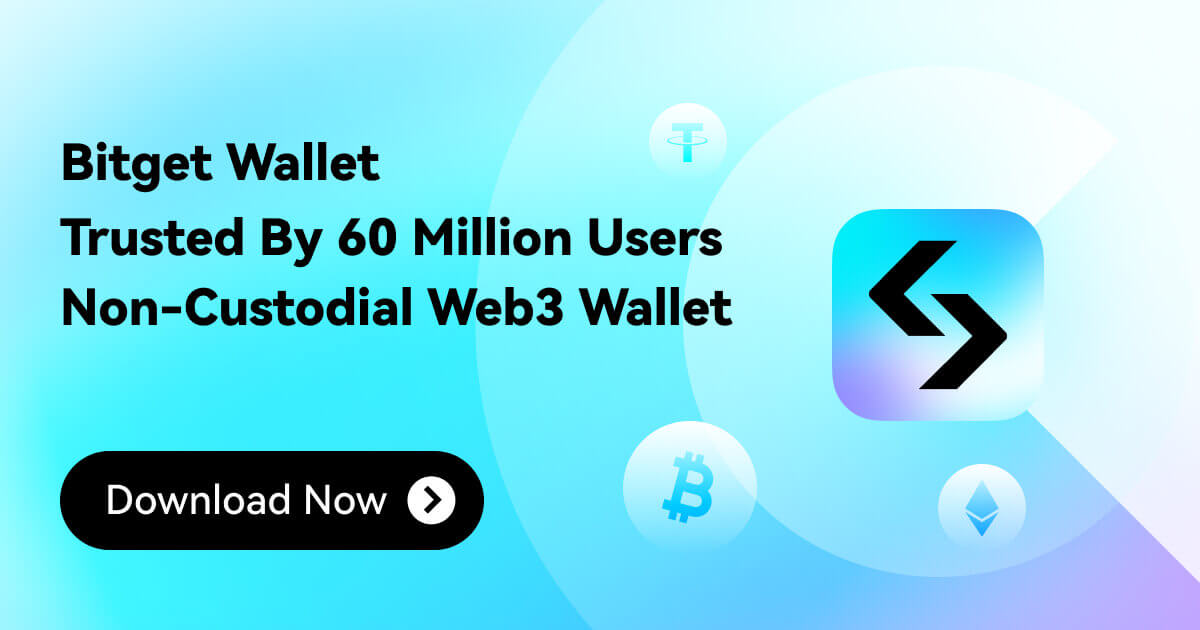Bitget MPC Wallet is Now Live! Experience A Safer and More User-Friendly Wallet Today

As the leading Web3 trading wallet in the industry, Bitget Wallet has been at the forefront of exploring cutting-edge cryptocurrency wallet technology, dedicated to providing users with secure asset management and seamless trading solutions. In July of this year, Bitget Wallet made a pioneering move by introducing the AA (Account Abstraction) wallet on the Starknet mainnet. This innovation marked a significant step forward in enhancing wallet intelligence and overall user experience.
Building upon the success of the AA wallet, Bitget Wallet has once again raised the bar with the introduction of the MPC (Multi-Party Computation) wallet, a seamless blend of security and user-friendliness.
MPC, which stands for Multi-Party Computation, is a Privacy Computing technology that underpins the MPC wallet. With the MPC wallet, the need to store private keys in a single location becomes a thing of the past. MPC employs a distributed key generation mechanism, generating multiple key shares across various locations controlled by multiple parties. When a transaction requires signing, the MPC protocol initiates a distributed and private signing process involving the owners of independent private key shares.
For a more detailed look at MPC technology, read our dedicated article here.
In simple terms, the MPC wallet introduces a "Mnemonic-free" user experience, significantly lowering the entry barriers for users. Users no longer need to grapple with the complexity of memorizing or storing mnemonic phrases and/or private keys. Instead, they can rely on password-based authentication to manage their encrypted assets, eliminating the risk of single-point private key exposure and enhancing overall security.
This transition mirrors the user experience of familiar Web2 products, making it easier for everyday users to seamlessly transition into the world of Web3 through technological innovation, product advancement, and an enhanced user experience.
In this article, we will be providing an in-depth breakdown on the Bitget MPC Wallet, showcasing its various functional advantages, core underlying technology, as well as a step-by-step user guide to get you started.
Unique Value Propositions of Bitget MPC Wallet
"Keyless" User Experience for Seamless Usage
Bitget MPC Wallet delivers a user experience that significantly differs from traditional EOA wallets, where users typically need to remember or copy complex mnemonic phrases and private keys. With Bitget MPC Wallet, users can complete their wallet setup via email-based login authentication, making it accessible even to novice users. Moreover, key shars can be easily backed up with only three simple steps, ensuring an intuitive and user-friendly experience.
Industry-Leading Security Parameters
Currently, most MPC wallets on the market tend to prioritize either security or convenience for ordinary users. For instance, some wallets share an account system with exchanges, facilitating faster setup but compromising on risk dispersion. Others use algorithm protocols with ordinary large primes, omitting secure large primes that resist quantum attacks, resulting in lower security protection levels. Bitget Wallet's MPC wallet, on the other hand, offers technically superior security, addressing known risks found in some MPC wallet products available today, and making it more resilient against unknown threats.
Bitget MPC Wallet employs advanced Threshold Signature Scheme (TSS) technology within its MPC framework. It adheres to the strictest security standards, including the use of secure large prime numbers, Distributed Key Generation (DKG), distributed collaborative signature, homomorphic encryption, and the most commonly used "2/3" threshold setup. This ensures that the TSS protocol operates with the highest level of security protection at all stages, providing users with the utmost security for their assets.
When generating public and private keys, Bitget MPC Wallet employs secure large prime numbers, offering protection against quantum attacks. Users will need to wait for approximately one minute during the generation process due to the stringent pre-programmed conditions that need to be satisfied in the generation of these large prime numbers to ensure that they will be as secure as possible. This allows Bitget MPC Wallet users on the C-end to enjoy top-tier security protection and encryption.
For private key generation, Bitget MPC Wallet utilizes distributed key generation technology to create "implicitly mapped complete private key" shares through multi-party collaborative computing. Each key share contains a fragment that will never be transmitted, guaranteeing that private key shares remain secure and that complete private keys are never exposed or leaked, avoiding the possibility of single-point failure.
In the signature process, Bitget MPC Wallet employs distributed threshold signature technology, maintaining the private key in a decentralized and "fluid" state. This enables users to complete signatures without exposing the entirety of the private key at any stage, enhancing both private key and asset security.
These security parameters are meticulously implemented to ensure that Bitget MPC Wallet adheres to prominent security standards in the industry, and in so doing maximizes user security and decentralization using advanced core technology and sub-protocols.
Reshare Mechanism and Standalone Passwords for Added Assurance
Bitget MPC Wallet incorporates a unique "Reshare" mechanism, which automatically invalidates key shares on an old device after a user successfully connects a new device to the wallet. This measure adds an extra layer of asset security to ensure that key shares are not left in a discarded or forgotten device that may no longer be in use.
Additionally, Bitget MPC Wallet also supports the configuration of standalone transaction passwords, ensuring that key shares held by the server can only participate in completing digital signatures with the user's explicit and active consent.
2/3 Signature Mechanism for Absolute User Control
Bitget MPC Wallet boasts a 2/3 signature mechanism, a rarity among MPC wallets designed for C-end users. It offers a comprehensive enterprise-level MPC technology solution for everyday users.
The 2/3 signature mechanism introduces a minimum quorum for signature authorization, where 2/3 of the total key shares are required to complete the digital signature. One share resides on the user's current device and another is kept on the platform's server. Both of these key shares are used to participate in signature authorization. The last key share is stored on a backup cloud server such as iCloud or Google Drive, and is not used for signature verification but instead for resharing. This 2/3 method achieves a comparatively higher level of decentralization and security as opposed to hybrid hosting, where users and platforms share joint control over the private key with neither party being able to access the funds unilaterally, as well as third party hosting, where platforms have absolute control over the private key and therefore have full access over user funds.
Creating your Bitget MPC Wallet
To set up your Bitget MPC Wallet, please follow the steps below.
Step 1: Select "MPC Wallet" in the new wallet creation dropdown list.
Step 2: Set a preferred pin code for your new Bitget MPC Wallet, and verify it. Existing users can use their previous pin code.
Step 3: Key in your email address. Please do take note that this email address will be associated with one of the key shares, as explained above, so do enter a valid email address that you trust and that is in use.

Step 4: Verify the email address using the verification code sent to your email inbox.
Step 5: Set your 8-digit MPC payment password, and verify it again. This payment password is important as it will be needed in the event of wallet recovery. It is also recommended to enable Face ID to facilitate more convenient verification in the future.

Step 6: Wait while your wallet generates your key shares. This step may take around a minute to complete, due to the complex encryption technology that ensures optimal security for your new MPC wallet. Upon successful creation, you should be able to see the words "MPC Wallet" at the top left-hand corner of your home screen.


Backing Up your MPC Wallet
Step 1: Select "Take a minute to back up" on your wallet homepage.
Step 2: Select the cloud server that you wish to back up, and then tap "Authenticate".

Step 3: Approve the connection to your google account, and you should receive a notification when your backup is successful.

Recovering Your MPC Wallet
If your Bitget Wallet App is deleted, or if your device is lost, you may restore your wallet using cloud backup. Doing so will automatically invalidate the key shares on your old device.
Step 1: Upon re-downloading your Bitget Wallet app, select "Import a Wallet" and tap on "MPC Wallet".
Step 2: Set and verify your pin code and password, and enter the email address used previously to bind your MPC Wallet.

Step 3: Enter the verification code sent to your email, and enter the payment password you have previously used. New key shares will then be generated.

Step 4: You will receive a notification upon successful wallet recovery. Do take note to back up your recovered MPC wallet again to maximize your wallet security.

Closing
This concludes our in-depth explanation and guide on Bitget MPC Wallet. Bitget Wallet remains committed to further enhancing and upgrading MPC features to provide stronger security parameters and more user-friendly interfaces.
Follow Bitget Wallet to stay up-to-date with all of our latest events, findings, and promotions, and let Bitget Wallet be your premier gateway into the Web3 space.
For more information, visit: Website | Twitter | Telegram | LinkedIn | Discord
For media inquiries, please contact: [email protected]
For business inquiries, please contact: [email protected]
- Bitget Wallet Help Center2023-11-09 | 2 minutes


















